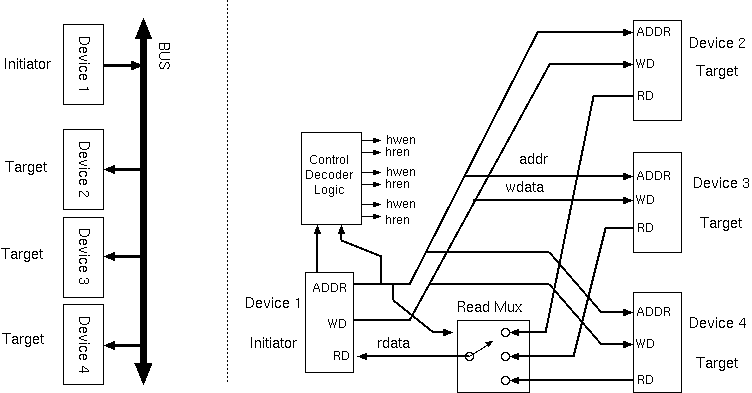
The bus in our early microcomputer was a true bus in the sense that data could get on and off at multiple places. SoCs do not use tri-states but we still use the term `bus' to describe the point-to-point connections used today between IP blocks.

Basic bus illustration: one initiator and three targets.
No tri-states are used: address and write data outputs use wire joints or buffers, read data uses multiplexors.
There is only one initiator, so no bus arbitration is needed.
Max throughput is unity (i.e. one word per clock tick).
Typical SoC bus capacity: 32 bits × 200 MHz = 6.4 Gb/s, but owing to protocol degrades with distance. This figure can be thought of as unity (i.e. one word per clock tick) in comparisons with other configurations we shall consider.
The interrupt wiring is not shown. If device 1 is a processor, it might have a dedicated interrupt wire from each other device.
| 66: (C) 2008-18, DJ Greaves, University of Cambridge, Computer Laboratory. |